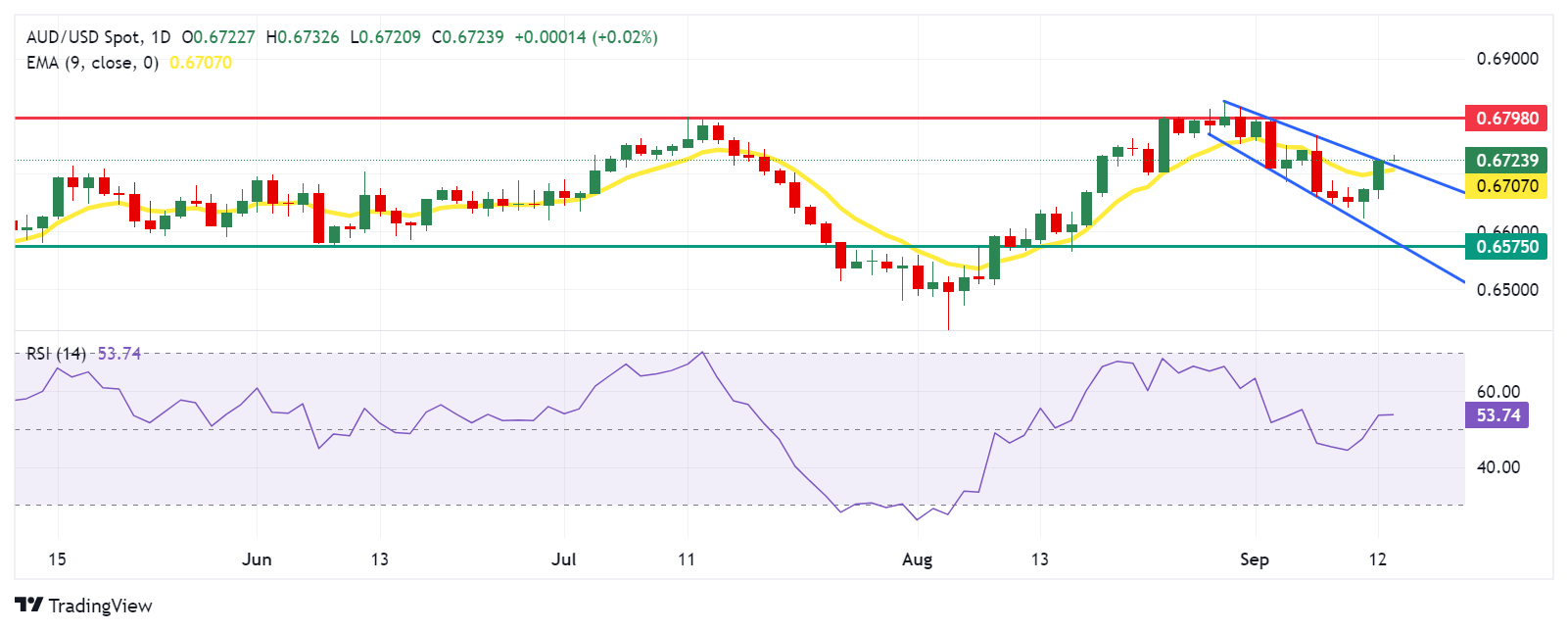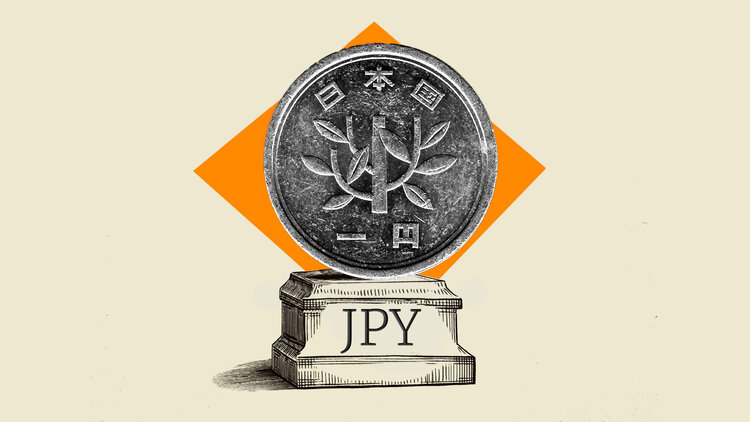- The AUD/USD pair is appreciating as US data reinforces the likelihood of the Fed cutting interest rates next week.
- The US Producer Price Index rose above expectations, boosted by higher services costs.
- The Fed is expected to cut interest rates by 25 basis points at its September meeting.
The AUD/USD extended its gains for a third consecutive session on Friday as economic data from the United States (US) reinforced the possibility that the Federal Reserve (Fed) will cut interest rates next week.
The U.S. Department of Labor reported that initial claims for jobless benefits rose as expected last week, beating the previous week’s figures. In addition, U.S. factory inflation rose above expectations, driven by higher service costs.
US Consumer Price Index (CPI) data for August showed that headline inflation fell to a three-year low, although core inflation beat expectations. This development has increased the likelihood that the Federal Reserve (Fed) will begin its easing cycle with a 25 basis point interest rate cut in September. Investors are turning their attention to the Michigan Consumer Sentiment Index, which is scheduled for release on Friday.
Daily Market Wrap: Australian Dollar Extends Gains on Improved Risk Sentiment
- The US Producer Price Index (PPI) rose 0.2% on a monthly basis in August, beating the expected 0.1% increase and 0.0% previously. Meanwhile, the core PPI accelerated to 0.3% on a monthly basis, compared with the expected 0.2% increase and a 0.2% contraction in July.
- US Initial Claims for Jobless Benefits rose slightly in the week ending September 6, rising to the expected 230K from the previous reading of 228K.
- Former Reserve Bank of Australia (RBA) Governor Bernie Fraser has criticised the current RBA Board for being too focused on inflation at the expense of the labour market. Fraser suggested the Board should cut the cash rate, warning of “recessionary risks” that could have serious consequences for employment.
- Australian consumer inflation expectations eased to 4.4% in September, slightly below August’s four-month high of 4.5%. The decline underscores the central bank’s efforts to balance reducing inflation over a reasonable timeframe with maintaining gains in the labor market.
- The US Consumer Price Index fell to 2.5% year-on-year in August, from the previous reading of 2.9%. The index missed the expected reading of 2.6%. Meanwhile, the headline CPI came in at 0.2% month-on-month.
- The US core CPI, excluding food and energy, was unchanged at 3.2% year-on-year. On a monthly basis, the core CPI rose to 0.3% from the previous reading of 0.2%.
- The first US presidential debate between former President Donald Trump and Democratic candidate Kamala Harris in Pennsylvania was won by Harris, according to a CNN poll. The debate began with a critical focus on the economy, inflation and economic policies.
- On Wednesday, Sarah Hunter, Deputy Governor for Economics at the Reserve Bank of Australia (RBA), commented that high interest rates are suppressing demand, which is expected to lead to a mild economic slowdown. Hunter also noted that the labor market remains tight relative to full employment levels, with job growth projected to continue, albeit slower than population growth, according to Reuters.
Technical Analysis: Australian Dollar Moves Above 0.6700, Nine-Day EMA
The AUD/USD pair is trading near 0.6730 on Friday. The technical analysis of the daily chart indicates that the pair has broken above the descending channel, signaling a weakening of the bearish bias. Moreover, the 14-day Relative Strength Index (RSI) has moved above the 50 level, suggesting a shift in momentum from a bearish to a bullish trend.
On the upside, the AUD/USD pair could explore the region around its seven-month high of 0.6798, aligned with a psychological level of 0.6800.
On the downside, the AUD/USD pair could find immediate support around the upper boundary of the descending channel near 0.6720, followed by the nine-day exponential moving average (EMA) at the level of 0.6707.
A return to the descending channel would reinforce the bearish bias and lead the pair to navigate the region around the lower boundary of the descending channel around 0.6600, followed by the retracement support zone near 0.6575.
AUD/USD: Daily Chart
Australian Dollar PRICE Today
The table below shows the Australian Dollar (AUD) exchange rate against major currencies today. The Australian Dollar was the strongest currency against the New Zealand Dollar.
| USD | EUR | GBP | JPY | CAD | AUD | NZD | CHF | |
|---|---|---|---|---|---|---|---|---|
| USD | -0.12% | -0.16% | -0.48% | -0.07% | -0.05% | -0.09% | -0.21% | |
| EUR | 0.12% | -0.06% | -0.38% | 0.03% | 0.07% | 0.10% | -0.09% | |
| GBP | 0.16% | 0.06% | -0.30% | 0.06% | 0.12% | 0.17% | -0.05% | |
| JPY | 0.48% | 0.38% | 0.30% | 0.41% | 0.43% | 0.46% | 0.28% | |
| CAD | 0.07% | -0.03% | -0.06% | -0.41% | 0.00% | 0.09% | -0.14% | |
| AUD | 0.05% | -0.07% | -0.12% | -0.43% | -0.01% | 0.05% | -0.16% | |
| NZD | 0.09% | -0.10% | -0.17% | -0.46% | -0.09% | -0.05% | -0.21% | |
| CHF | 0.21% | 0.09% | 0.05% | -0.28% | 0.14% | 0.16% | 0.21% |
The heatmap shows percentage changes of major currencies. The base currency is selected from the left column, while the quote currency is selected from the top row. For example, if you choose the Australian Dollar from the left column and move along the horizontal line to the US Dollar, the percentage change shown in the chart will represent the AUD (base)/USD (quote).
Australian Dollar FAQs
One of the most important factors for the Australian Dollar (AUD) is the level of interest rates set by the Reserve Bank of Australia (RBA). Since Australia is a resource-rich country, another key factor is the price of its largest export, iron ore. The health of the Chinese economy, its largest trading partner, is a factor, as is inflation in Australia, its growth rate and the Trade Balance. Market sentiment, i.e. whether investors are betting on riskier assets (risk-on) or seeking safe havens (risk-off), is also a factor, with risk-on being positive for the AUD.
The Reserve Bank of Australia (RBA) influences the Australian Dollar (AUD) by setting the level of interest rates that Australian banks can lend to each other. This influences the level of interest rates in the economy as a whole. The RBA’s main objective is to maintain a stable inflation rate of 2%-3% by adjusting interest rates up or down. Relatively high interest rates compared to other major central banks support the AUD, and the opposite for relatively low ones. The RBA can also use quantitative easing and tightening to influence credit conditions, with the former being negative for the AUD and the latter positive for the AUD.
China is Australia’s largest trading partner, so the health of the Chinese economy greatly influences the value of the Australian Dollar (AUD). When the Chinese economy is doing well, it buys more raw materials, goods and services from Australia, which increases demand for the AUD and drives up its value. The opposite occurs when the Chinese economy is not growing as fast as expected. Therefore, positive or negative surprises in Chinese growth data often have a direct impact on the Australian Dollar.
Iron ore is Australia’s largest export, worth $118 billion per year as of 2021, with China being its main destination. The price of iron ore can therefore be a driver of the Australian dollar. Typically, if the price of iron ore rises, the AUD rises as well, as aggregate demand for the currency increases. The opposite occurs when the price of iron ore falls. Higher iron ore prices also tend to lead to a higher probability of a positive trade balance for Australia, which is also positive for the AUD.
The trade balance, which is the difference between what a country earns from its exports and what it pays for its imports, is another factor that can influence the value of the Australian dollar. If Australia produces highly sought-after exports, its currency will gain value solely because of the excess demand created by foreign buyers wanting to purchase its exports versus what it spends on buying imports. Therefore, a positive net trade balance strengthens the AUD, with the opposite effect if the trade balance is negative.
Source: Fx Street
I am Joshua Winder, a senior-level journalist and editor at World Stock Market. I specialize in covering news related to the stock market and economic trends. With more than 8 years of experience in this field, I have become an expert in financial reporting.








